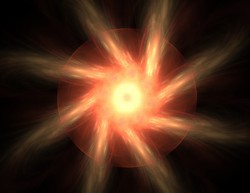Accelerator transmutation of nuclear waste
ADSs could be used to transmute minor actinides and other long-lived fission products, providing an answer to the problem of nuclear waste management. It consists of a fast subcritical reactor core coupled to an accelerator producing the extra neutrons needed to sustain the power delivered by the reactor core. Online monitoring of such a powerful system during its operation has been the focus of a series of research projects carried out with EU support. Within the FREYA(opens in new window) (Fast reactor experiments for hybrid applications) project, experiments were performed at the Belgian Nuclear Research Centre (SCK•CEN). The Venus facility was modified to a fast reactor based on enriched uranium and lead. This fast reactor mock-up was coupled to an accelerator that delivered a deuteron beam, the Genérateur de Neutrons Pulsé Intense (GENEPI)-3C. The beam impinging on the core mid-plane of the Venus reactor generated 14 MeV neutrons. FREYA partners used the Sjöstrand and source jerk among other methods to estimate the reactivity of different subcritical configurations of the reactor cores. Their investigations covered configurations with effective multiplication factor k in the range between 0.95 and 0.99. The experiments provided substantial data for ADS code validation that is needed for licensing of the 'Multi-purpose hybrid research reactor for high-tech applications' (MYRRHA). Designed to be more than an accelerator-driven subcritical reactor, MYRRHA is foreseen to operate as a multipurpose irradiation facility. Moreover, measurements in the Venus facility laid the groundwork for development of the Advanced Lead Fast Reactor European Demonstrator (ALFRED). The reactor is currently being developed under the European Sustainable Nuclear Industrial Initiative (ESNII) by a consortium of industry and research partners.



